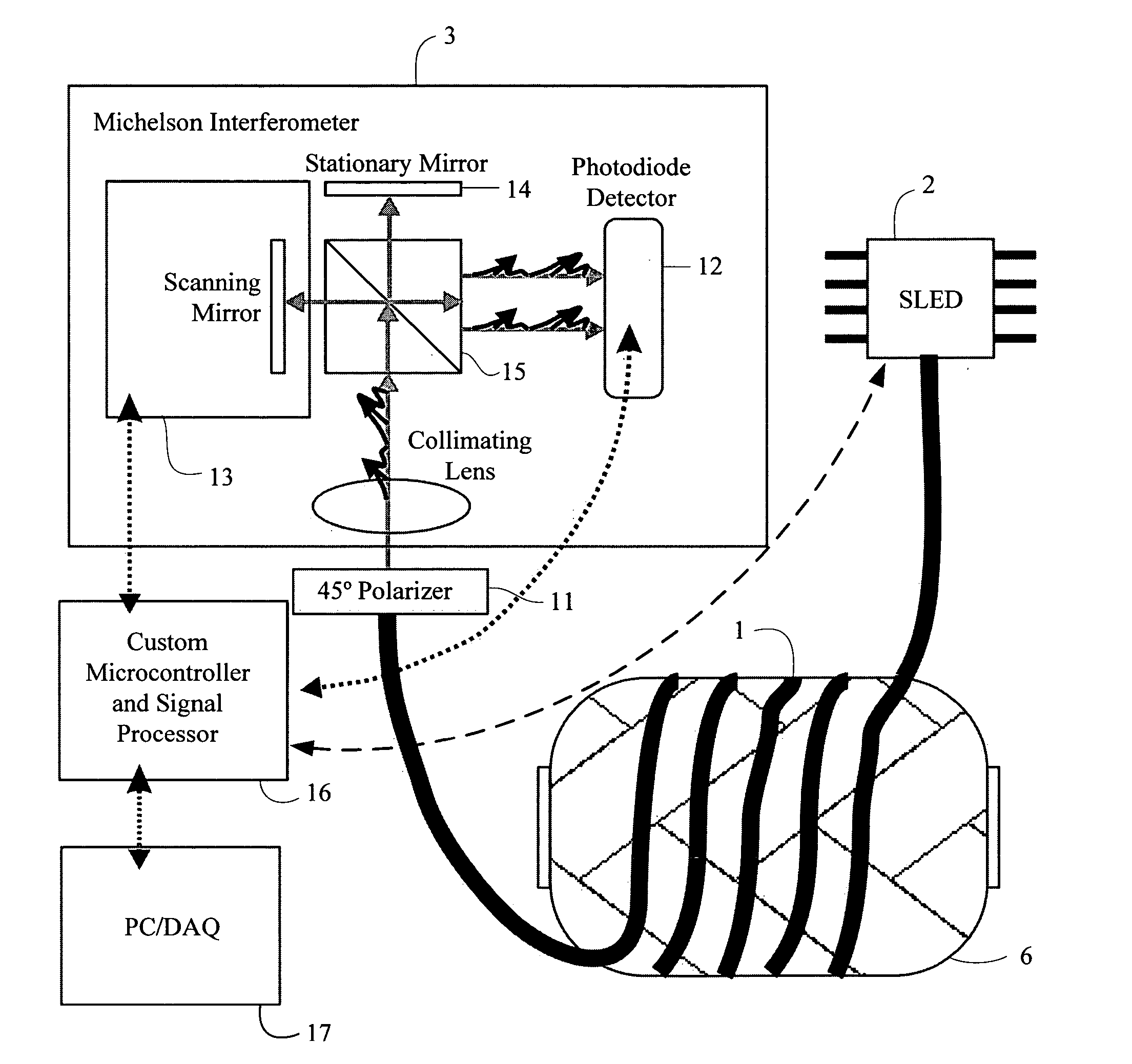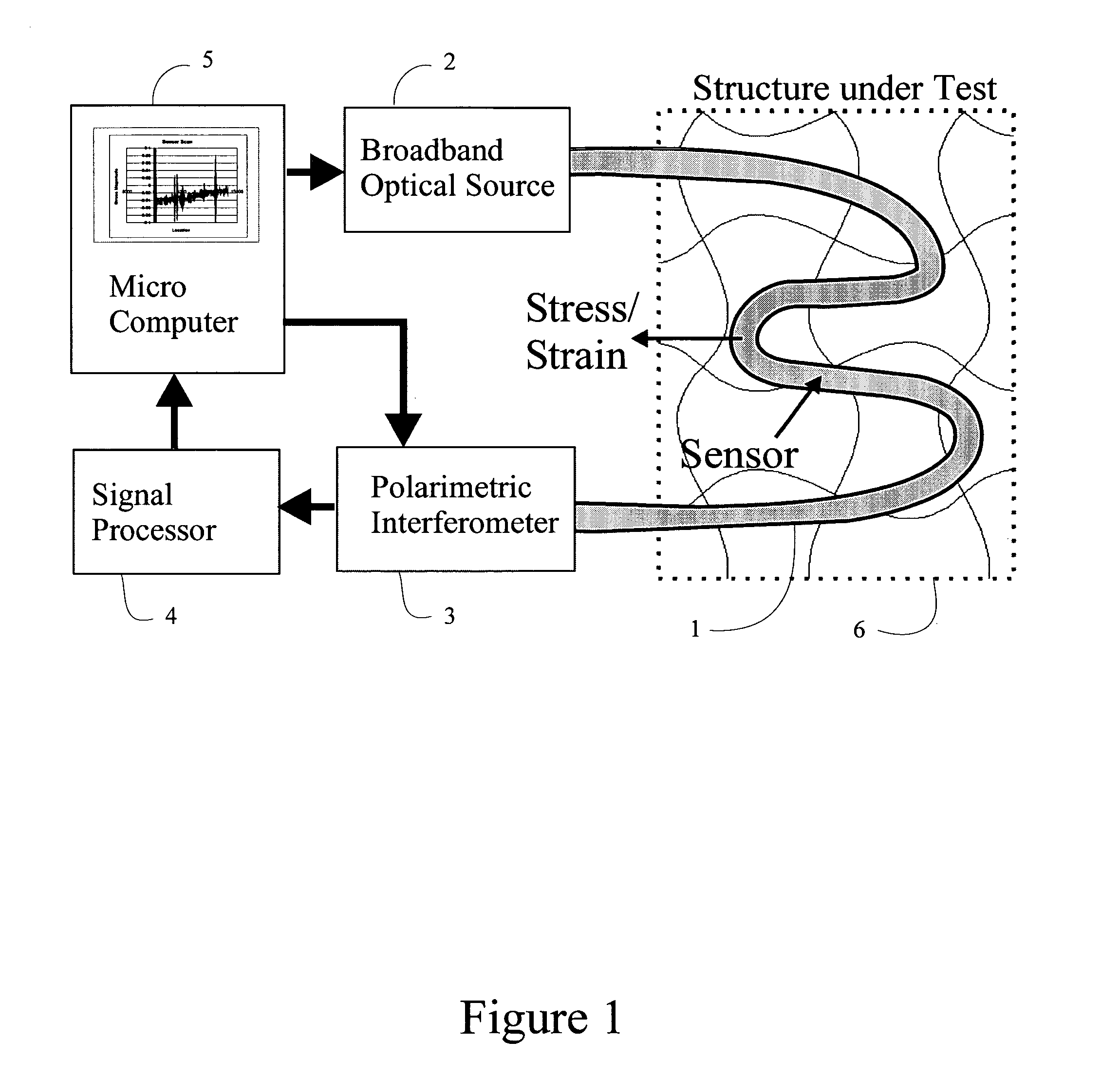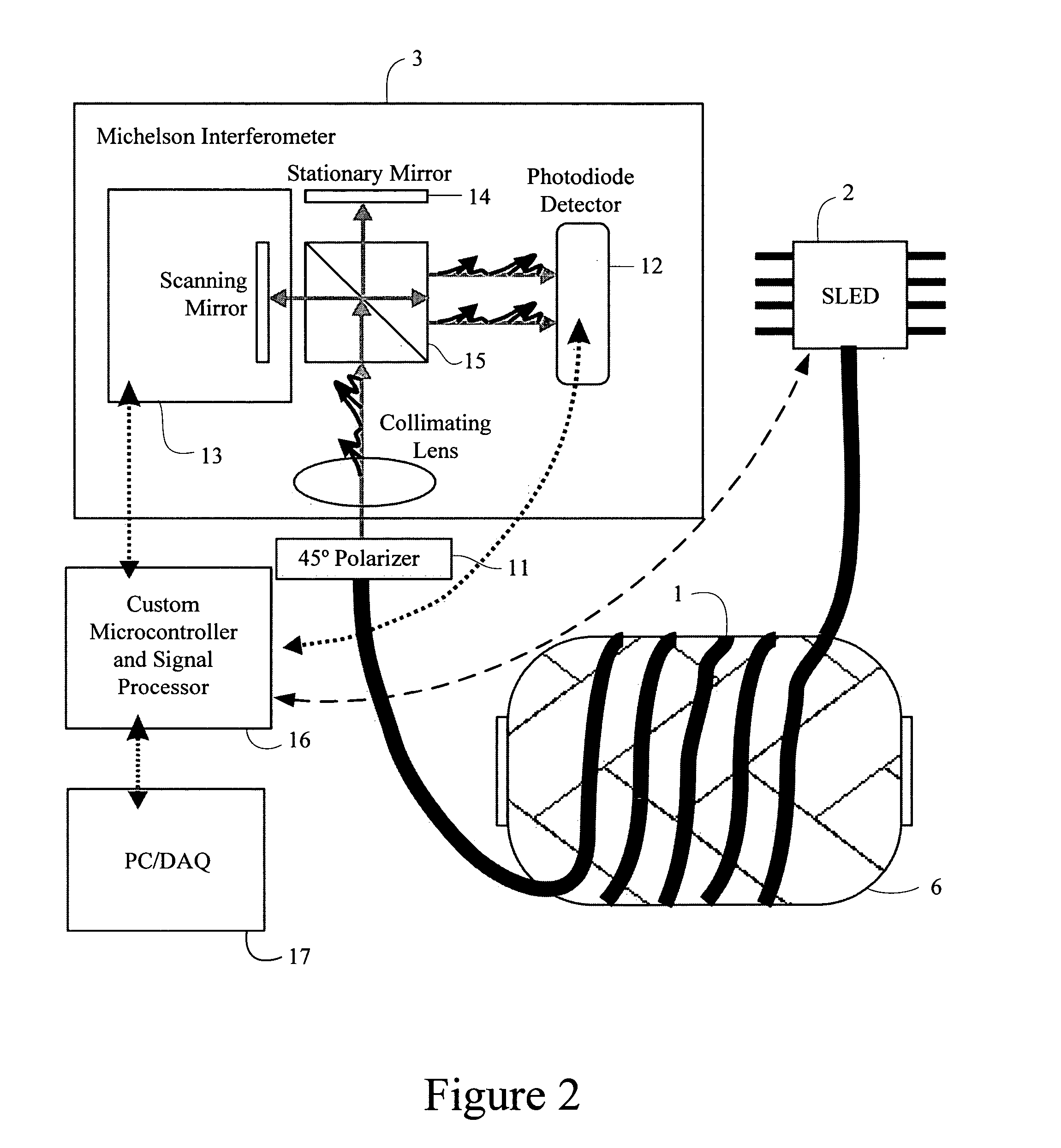Embeddable polarimetric fiber optic sensor and method for monitoring of structures
a fiber optic sensor and embedded technology, applied in the field of stress sensors, can solve the problems of not employing embedded sensors, using maintenance techniques and products that are more sophisticated and costly than they need, and affecting the use of applications and users
- Summary
- Abstract
- Description
- Claims
- Application Information
AI Technical Summary
Benefits of technology
Problems solved by technology
Method used
Image
Examples
Embodiment Construction
[0031] The present invention and its advantages are best understood by referring to the drawings. The elements of the drawings are not necessarily to scale, emphasis instead being placed upon clearly illustrating the principles of the invention.
[0032] One embodiment of the invention is shown in FIG. 2. This embodiment uses a 30 mW 1565 nm super-luminescent light emitting diode (“SLED”) with a 3 dB bandwidth of 38 nm, resulting in a coherence length of 41 μm as the broadband optical source 2, although other optical sources could be used without departing from the scope of the invention. The output of the optical source 2 is polarized and aligned to one axis of the embedded fiber sensor 1. The fiber sensor 1 itself is a continuous length of polarization-maintaining single mode optical fiber wound around and embedded into the device under test 6. The fiber sensor 1 output is first transmitted through a polarizer 11 aligned at 45 degrees to the polarization axis of the fiber sensor 1. ...
PUM
 Login to View More
Login to View More Abstract
Description
Claims
Application Information
 Login to View More
Login to View More - R&D
- Intellectual Property
- Life Sciences
- Materials
- Tech Scout
- Unparalleled Data Quality
- Higher Quality Content
- 60% Fewer Hallucinations
Browse by: Latest US Patents, China's latest patents, Technical Efficacy Thesaurus, Application Domain, Technology Topic, Popular Technical Reports.
© 2025 PatSnap. All rights reserved.Legal|Privacy policy|Modern Slavery Act Transparency Statement|Sitemap|About US| Contact US: help@patsnap.com



